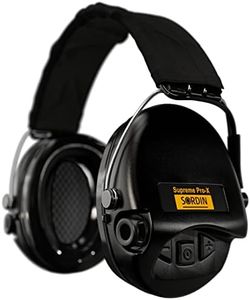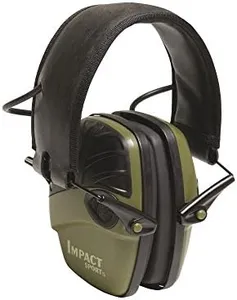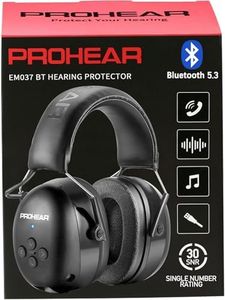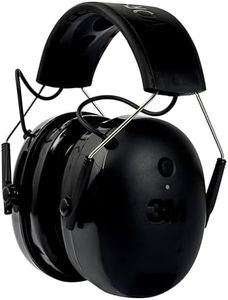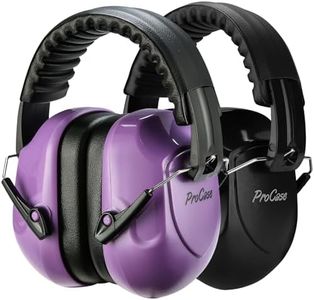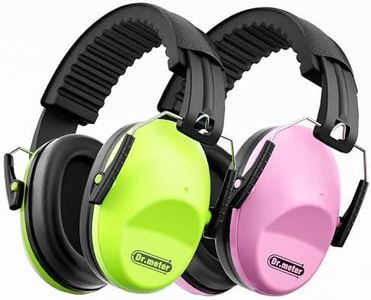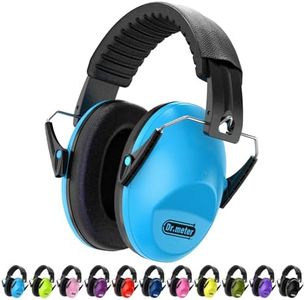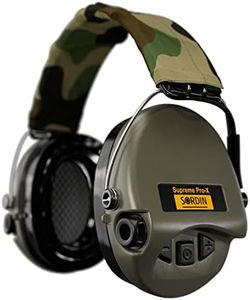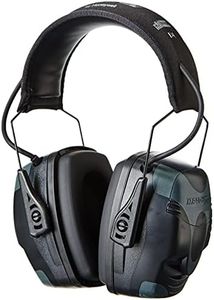We Use CookiesWe use cookies to enhance the security, performance,
functionality and for analytical and promotional activities. By continuing to browse this site you
are agreeing to our privacy policy
10 Best Safety Ear Muffs
From leading brands and best sellers available on the web.Buying Guide for the Best Safety Ear Muffs
Choosing the right safety ear muffs can make a big difference in protecting your hearing in noisy environments, whether at work, during DIY projects, or at loud events. It's important to look beyond just comfort and style; understanding the main features of ear muffs will help you select the pair that best matches where and how you plan to use them.Noise Reduction Rating (NRR)Noise Reduction Rating, or NRR, is a measure of how much sound the ear muffs can block out, expressed in decibels (dB). A higher NRR means greater hearing protection. NRR values typically range from around 20dB to 34dB. Lower NRR (20–24dB) is suitable for less noisy environments like mowing the lawn, while mid-range (25–29dB) works well for construction sites or industrial use, and high NRR (30dB+) offers maximum protection for extremely loud situations like shooting ranges. To pick the right NRR, consider the level of noise you expect to face. The greater and more constant the noise, the higher the NRR you'll need for proper protection.
Comfort and FitComfort and fit refer to how the ear muffs sit on your head and ears. This includes the padding on the ear cups, the size and shape of the cups, and the adjustability of the headband. Well-padded, adjustable muffs are less likely to cause discomfort during long use. Small, lightweight muffs are better for short-term use or those who need to move around a lot, while larger, heavily padded ones offer more comfort for extended use. If you will wear the muffs for hours at a time, prioritize models with soft cushions and adjustable bands to evenly distribute pressure.
Design and StyleThe design of safety ear muffs includes choices such as over-the-head, behind-the-head, or helmet-attachable designs. Over-the-head is the most common and versatile, while behind-the-head might be preferable when wearing other headgear. Helmet-attachable designs are specifically for those who wear hard hats regularly. Consider what other gear you'll be using and how the muffs need to fit with these items to avoid discomfort or interference.
Durability and MaterialsDurability is determined by the quality of materials used—such as sturdy plastics, metals, and thick cushions. Ear muffs for industrial use should have robust construction to withstand bumps, drops, and daily wear, while home or occasional users can prioritize lighter materials. If you expect to use ear muffs outdoors or in tough conditions, opt for weather-resistant and ruggedly built options. Always check for quality construction that matches how rough or gentle you’ll be treating your ear muffs.
Weight and PortabilityWeight and portability matter if you need to carry ear muffs around or wear them for long stretches. Lighter muffs mean less strain on your head and neck, and foldable models are easier to pack and store. For jobs that require frequent movement or travel, compact and lightweight ear muffs are more convenient, while for stationary use, weight is less of a concern. Decide if you'll frequently transport your muffs and if you'll be wearing them during active work.
